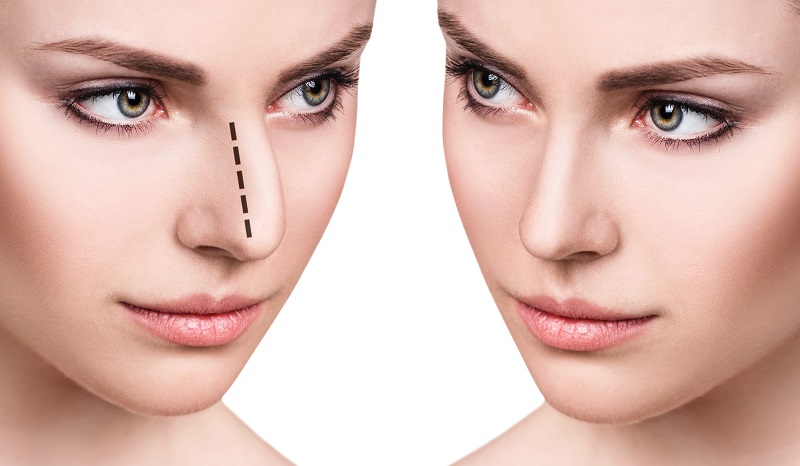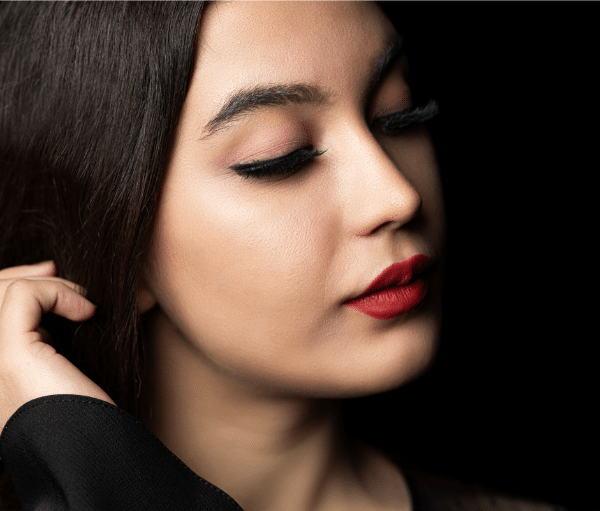
If you’ve been unhappy with your nose’s appearance for a long time, or if you have trouble breathing through it, you may be considering rhinoplasty.
Rhinoplasty, also known as a nose job, can change many things about this central feature on your face, including the size, width, position, and contour of the nostrils and profile. Some skilled plastic surgeons specialize in different types of rhinoplasty procedures like ethnic rhinoplasty, which is a good fit for people of various ethnicities that want a subtle change to the nose.
Before you undergo a nose job, it’s essential to know as much as you can. Below are the top things to know before you have a rhinoplasty.
Types Of Rhinoplasty Surgeries
Rhinoplasty is a nose surgery that alters the appearance of the nose, but there are several types to consider. Which is best for you depends on your anatomy, goals, and the opinion of your plastic surgeon:
- Open rhinoplasty: For a significant reshaping of your nose, your cosmetic surgeon makes incisions in the vertical skin strip that separates the nostrils, also known as the columella. The soft tissue and skin are then pulled away from the nose structure so your surgeon can alter the nasal anatomy as needed.
- Closed rhinoplasty: For a minor reshaping of the nose, it’s possible to make incisions only inside the nose. The skin of your nose is separated from the cartilage and bone, which form the nose framework. Once that is exposed, cartilage and bone can be taken out, reshaped, or rearranged to achieve optimal results.
- Secondary rhinoplasty: This is also called revision rhinoplasty done to correct issues after a previous nose job. Sometimes, the nose changes with age, and revision surgery may be needed, as well. Revision rhinoplasty procedures can be open or closed, depending on the complexity of the situation.
- Liquid rhinoplasty: This non surgical rhinoplasty operation uses injectable fillers to fill in depressions in the nose, smooth out undesirable angles, or alter the angle of the tip. Instead of cutting away a bump in the nose, your surgeon will use a dermal filler to make it even with the rest of the structure. While the results are temporary, this can be an excellent choice for minor changes.
The Importance Of The Rhinoplasty Consultation
When you’re deciding whether to have a nose job, consultation with your surgeon is critical. During this meeting, your surgeon will take pictures of your nose at various angles. He also will go over your expectations to ensure they’re realistic.
You may want to bring pictures of noses from the media or other sources that appeal to you. This will help the dialogue with your surgeon about your goals and whether what you want is possible, given the anatomy of your nose.
Also, your surgeon can show you images of other patients with a nose shape like yours so that you can get a good idea of the possible results. Some surgeons also offer 3-D or 4-D computer imaging to show what your nose will look like.
If necessary, your surgeon can talk to you about doing other surgeries during your rhinoplasty, such chin liposuction. Doing both surgeries at once can provide more balance and symmetry to the face for great results.
Rhinoplasty Procedure
Most rhinoplasty procedures are done at a surgical suite on an outpatient basis. How long the procedure takes depends on the type that you need.
For instance, a primary open rhinoplasty surgery can take up to three hours, but a revision rhinoplasty can take a lot longer. A nose job with dermal fillers may take as little as 15 minutes.
These are the steps in typical rhinoplasty procedures:
- Anesthesia: Your surgeon will use either local or general anesthesia for a traditional rhinoplasty. But a filler rhinoplasty only requires local anesthesia.
- Incision: The incisions may be inside the nose in a closed rhinoplasty or the columella in an open rhinoplasty. Your surgeon then raises the skin and cartilage that cover the bone structure. This gives your surgeon the access required to reshape your nose.
- Reshaping: Your plastic surgeon can augment or reduce your nasal structures like your nasal tip with cartilage taken from other parts of the body. That cartilage can come from the ribs, ear, or septum, in most cases. Concerns about a deviated septum are common reasons patients come in for a cosmetic nose surgery. If you have a deviated septum, this procedure should straighten it.
- Closing: After the surgeon sculpts the bone structure of the nose, the skin and tissue are placed over the structure again, and he will close the incisions. You will probably need bandages or a splint for about two weeks.
Recovery From Rhinoplasty

It may be hard to breathe through the nose for the first day because of nasal packing or selling. This is the case for both open rhinoplasty and closed rhinoplasty. You also can have some pain that can be controlled with medication. But most people don’t need pain drugs after the first two days.
Your surgeon may advise putting ice or cold compress on the nose for a few days. Swelling also can be reduced by elevating your head for a few days. Note that you cannot blow your nose for awhile after a nose job; you can address this problem with decongestants.
After about a week, your surgeon will remove your bandages. You’ll still have swelling, but much of it will go away after two weeks. By one month after the procedure, most swelling should be gone, and you can start to see how your ‘new’ nose will look. But all swelling can take up to a year to go away.
Risks Of Rhinoplasty
Most patients have an uneventful rhinoplasty procedure, but it IS major surgery, so there are risks to consider:
- Bleeding
- Infection
- Breathing problems due to nasal obstruction
- Dissatisfied with the results, possibly requiring revision surgery
- Septal perforation, or small hole in the septum
- Complications from anesthesia
- Death, in very rare cases
Your surgeon will provide you with detailed instructions before your rhinoplasty to ensure that you have minimal complications. The most important thing is to follow your surgeon’s directions as closely as possible.
Questions and Answers
Which type of rhinoplasty is best?
Closed Rhinoplasty boasts hidden scarring and a less invasive approach than open surgery, leading to swifter recovery. Closed Rhinoplasty is ideal for dorsal hump removal and other nasal dorsum concerns.
Is there different types of rhinoplasty?
The primary rhinoplasty surgery types are Open Structure Rhinoplasty and Closed Rhinoplasty.
What is the most popular rhinoplasty?
Open Rhinoplasty is recommended for substantial nose structure changes. It involves small incisions between the nostrils and beneath the nose’s columella area.
Book Your Dallas Rhinoplasty Procedure Today
Interested in a Dallas rhinoplasty? Schedule an appointment with plastic surgeon Dr. Raja Mohan today. He will go over your goals, medical history and help you decide if rhinoplasty is a good fit for you.
References
- Rhinoplasty Overview. (n.d.). Accessed at https://utswmed.org/medblog/rhinoplasty-nose-job/
- 7 Things To Know About Nose Jobs. (2020). Accessed at https://www.healthgrades.com/right-care/rhinoplasty-nose-job/7-things-to-know-about-nose-jobs
- Rhinoplasty Overview. (n.d.). Accessed at https://www.mayoclinic.org/tests-procedures/rhinoplasty/about/pac-20384532